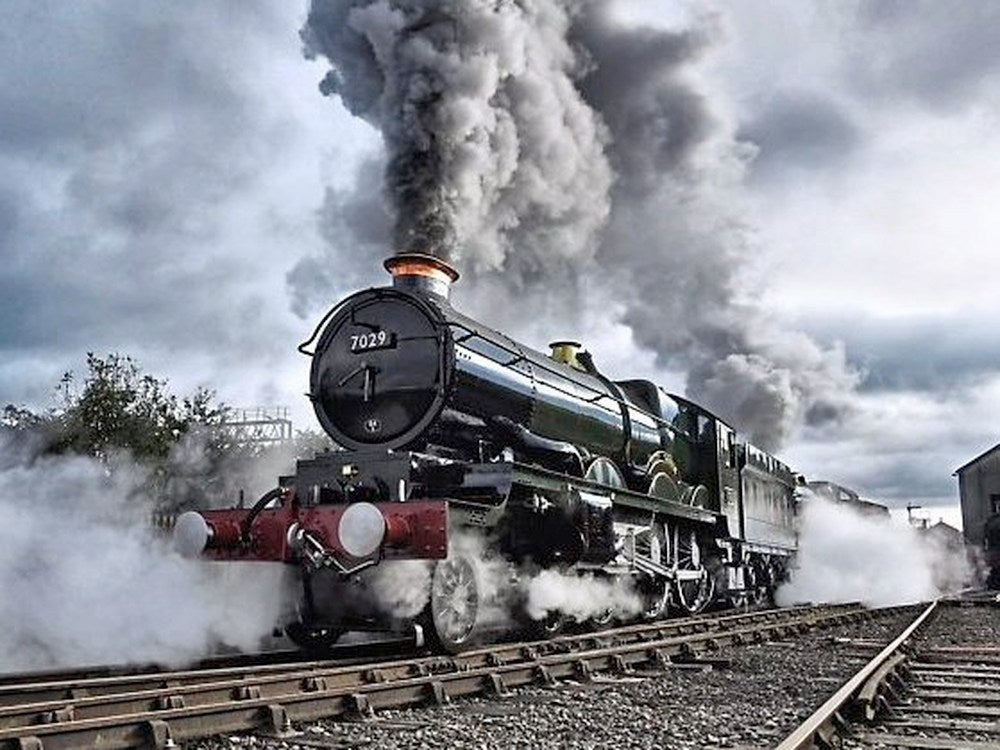 "Cé hé sin" (michael-m-mouse)
"Cé hé sin" (michael-m-mouse)
04/27/2019 at 19:00 • Filed to: Starting
 2
2
 2
2
 "Cé hé sin" (michael-m-mouse)
"Cé hé sin" (michael-m-mouse)
04/27/2019 at 19:00 • Filed to: Starting |  2 2
|  2 2 |
Actually, it may very well be a problem. Depends what you’re driving.
Driving a really old car? You’ll have one of these. Off you go. Top tip: keep your thumbs on the same side of the handle as your fingers.

Driving a newer manual car?
Ignition on, second gear, press clutch, get car up to about slow running speed, release clutch quickly pressing acc elerator . To get up to speed, you’ll need the hill you carefully parked on because you knew your starter was dodgy, or to recruit somebody to push. Nobody to push? You could do it yourself. You’ll need enough momentum to be able to jump in before it’s too late. You’ll not need to find the car going downhill and running away from you. That rarely ends well.
Driving a Smart 450 or 452?
Ignition on, full throttle while stationary, hold gear lever in +, use gravity or trusted helpers to get up to about running speed at which point the clutch should engage.

Driving one of several varieties of older automatic?
Ignition on, lever in neutral, tow or serious hill to about 20 or 30 mph, lever in D while pressing accelerator.
Driving an external combustion vehicle? Ah, the virtues of torque at zero rpm. All you need is enough water and enough fuel. No, this one doesn’t have a particulate filter.

Driving a big plane? If you’re still on the ground, you’re going nowhere until it’s fixed. Still in the air? You’ll need to go down to where there’s enough oxygen in the air that the engine will windmill its way to a start, if you’re lucky. Just like starting your car using a hill. If you’re not lucky, the ground awaits one way or the other.
Driving a plane that doesn’t usually use an engine?
A glider (or sailplane, if you wish) has the distinct disadvantages that it’s not getting off the ground by itself and that it goes downwards unless the air is going upwards. You can fix this by fitting an engine. Fit a bigger one and you can both take off and extend your range. Fit a smaller one and you can use it only as a range extender. Weight is an enemy in the aviation world, especially the unpowered section of it, so you make your engine lighter by dispensing with starter, alternator and battery (magneto instead). You’ll need to start it though and so you use the hill start technique. You extract the prop from its hidey hole behind you, add fuel and rely on the air rushing by to turn the blades with sufficient vigour that the little two stroke starts. You really, really don’t want to start this process at low altitude and find yourself fixated on starting a recalcitrant two stroke while the ground (you’re going downhill remember) gets closer. And closer.
Just in case you’re wondering, adding a little two stroke engine to your glider costs about as much as a nice car.

 bhtooefr
> Cé hé sin
bhtooefr
> Cé hé sin
04/27/2019 at 19:17 |
|
And this is why electric motors are taking off in gliders (pun fully intended, always intend your puns, weaklings).
You just turn them on (if it’s on a pylon like the ICE sustainers, you of course extend the pylon first), and then they work. No starter needed, no diving needed.
 SilentButNotReallyDeadly...killed by G/O Media
> Cé hé sin
SilentButNotReallyDeadly...killed by G/O Media
> Cé hé sin
04/27/2019 at 19:27 |
|
Many moons ago, we started our first Nissan Patrol (G60) with its crank handle...simply because it had one. 4.0 litre straight 6 petrol. It started on the third crank but it took another two to throw the crank handle out. Never did that again...
A mate used to fix out board motors in his small shed. He often started them without the pull cord in place so he could see what was going on. In this case, he used a power drill with a socket driver on the top nut to crank it.
On one memorable occasion, the socket jammed on the top nut as the engine (40 hp Yamaha) started . Old mate got tossed and then the cord of the power drill started being whipped around the shed like a flail causing much demolishment. Shenanigans continued for a couple of minutes until the fuel ran out...